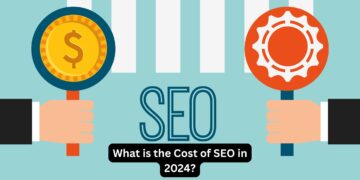In the digital age, search engine optimization (SEO) is not just a buzzword; it’s a crucial strategy for businesses aiming to increase their online presence and drive organic traffic. However, one of the most common questions asked by business owners and marketers is, “How much does SEO cost?” In 2024, SEO pricing varies significantly based on several factors, including the scope of the project, the services offered, and the expertise of the provider. This article will provide a comprehensive breakdown of what influences SEO costs, helping you make an informed decision about your investment.
1. Factors Influencing SEO Costs
When evaluating the cost of SEO, it’s important to understand that no two businesses are the same, and thus, no two SEO strategies are identical. The following factors are some of the key determinants of SEO pricing:
a) Business Size and Industry
The size of your business and the competitiveness of your industry play a significant role in determining SEO costs. For example, a small local business might require a different approach compared to a large eCommerce site competing globally. Industries with high competition, such as legal or finance, often require more intensive SEO efforts, leading to higher costs.
b) Scope of Services
SEO is not a one-size-fits-all service. The range of services included in an SEO package, such as on-page optimization, content creation, technical SEO, link building, and local SEO, directly impacts the cost. Comprehensive packages that cover all aspects of SEO will naturally be more expensive than a package focusing solely on one or two elements.
c) Expertise and Experience of the SEO Provider
The experience and reputation of the SEO provider also influence costs. Agencies or consultants with a proven track record of delivering results often charge more than newer or less experienced providers. While it might be tempting to opt for cheaper services, investing in experienced professionals usually pays off in the long run through better performance and return on investment (ROI).
d) Project Duration and Frequency
SEO is an ongoing process rather than a one-time task. The duration of your SEO campaign and how frequently services are rendered (e.g., monthly vs. quarterly) can affect pricing. Long-term campaigns with continuous optimization and monitoring are generally more effective and, as a result, cost more.
e) Geographic Targeting
Whether your business targets a local, national, or global audience can impact SEO costs. Local SEO, which focuses on optimizing for location-based searches, may cost less than a national or international campaign that requires broader outreach and more resources.
2. Typical SEO Pricing Models
SEO costs in 2024 are typically structured around three common pricing models: hourly rates, monthly retainers, and project-based pricing. Each model has its advantages, depending on your specific needs and budget.
a) Hourly Rates
Some SEO consultants and agencies charge by the hour. This model is ideal for smaller projects or businesses looking for specific tasks, such as website audits or consulting services. Hourly rates for SEO typically range from $75 to $200 per hour, depending on the provider’s expertise and location.
b) Monthly Retainers
The most common pricing model for ongoing SEO services is the monthly retainer. Businesses pay a fixed fee each month for a set package of services. Monthly retainers can range from $500 to $5,000 or more, depending on the scope of work and the complexity of the project. This model is suitable for businesses that require consistent SEO support and long-term growth.
c) Project-Based Pricing
For businesses that need SEO services for a specific project or a one-time task, project-based pricing is an option. Prices vary widely depending on the project’s size and scope, ranging from a few thousand dollars for a basic project to tens of thousands for more complex initiatives like full website optimization.
3. The ROI of SEO: Is It Worth the Investment?
While the cost of SEO can vary widely, it’s essential to consider the potential return on investment. SEO is a long-term strategy that, when executed correctly, can deliver sustainable traffic, higher conversion rates, and improved brand visibility. Unlike paid advertising, which stops generating leads as soon as the budget is exhausted, SEO continues to deliver results over time. For many businesses, the cost of SEO is justified by the significant value it brings in terms of organic growth and customer acquisition.
4. Choosing the Right SEO Partner
Selecting the right SEO partner is crucial to ensure that your investment pays off. Here are some tips for finding a reliable provider:
a) Evaluate Their Track Record
Look for an SEO provider with a proven track record of success. Ask for case studies, client testimonials, and examples of past work. An experienced provider should be able to demonstrate their ability to deliver results.
b) Understand Their Approach
Ensure that the SEO provider follows ethical practices, often referred to as “white-hat SEO.” Avoid providers that promise quick fixes or guaranteed rankings, as these often rely on risky tactics that can lead to penalties from search engines.
c) Assess Communication and Transparency
Clear communication is essential for a successful partnership. Choose an SEO provider that is transparent about their processes, regularly updates you on progress, and is willing to answer your questions.
Conclusion
In 2024, the cost of SEO varies based on multiple factors, including the size of your business, the scope of services, and the expertise of your provider. Understanding these factors can help you make an informed decision about your SEO investment. Whether you opt for hourly rates, monthly retainers, or project-based pricing, it’s crucial to consider the long-term value that effective SEO can bring to your business. By choosing the right partner and investing in a strategy tailored to your needs, you can achieve sustainable growth and maximize your online presence.


































































